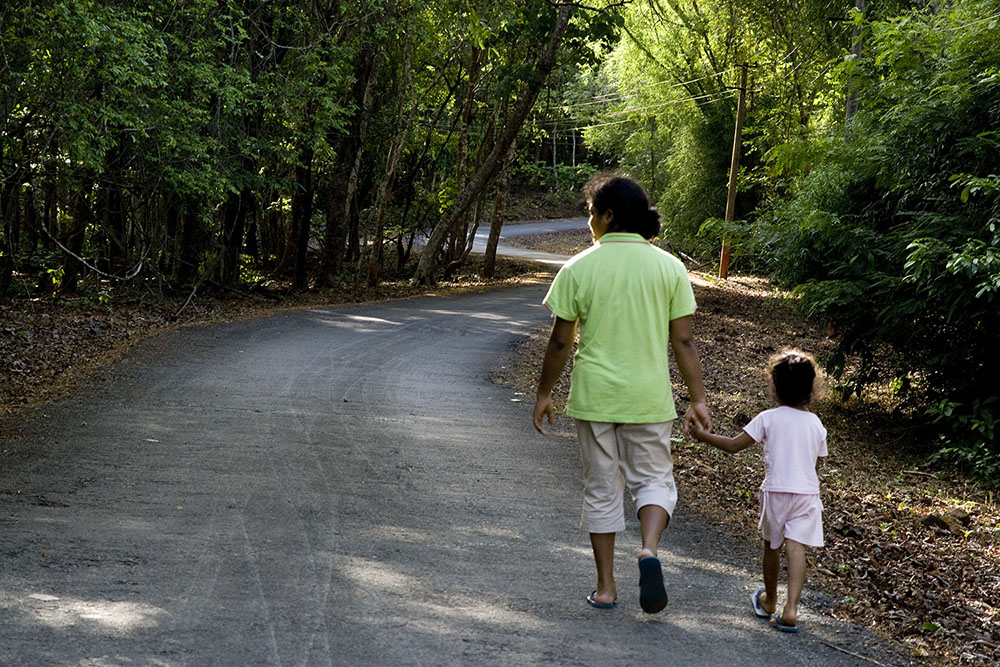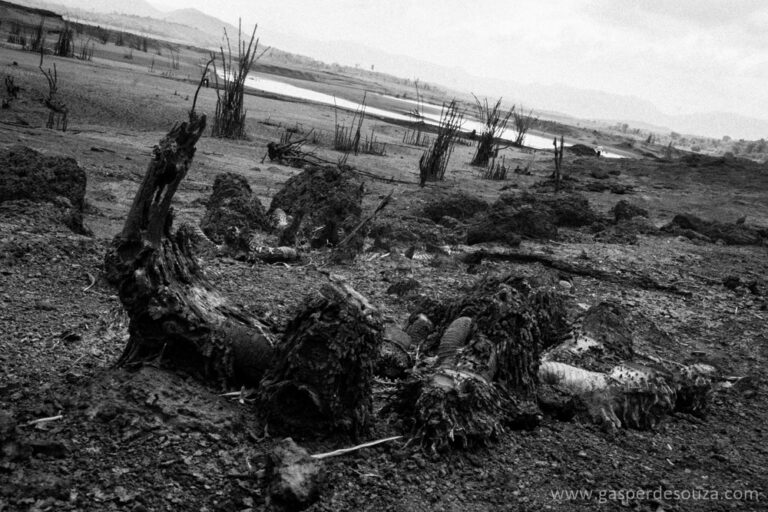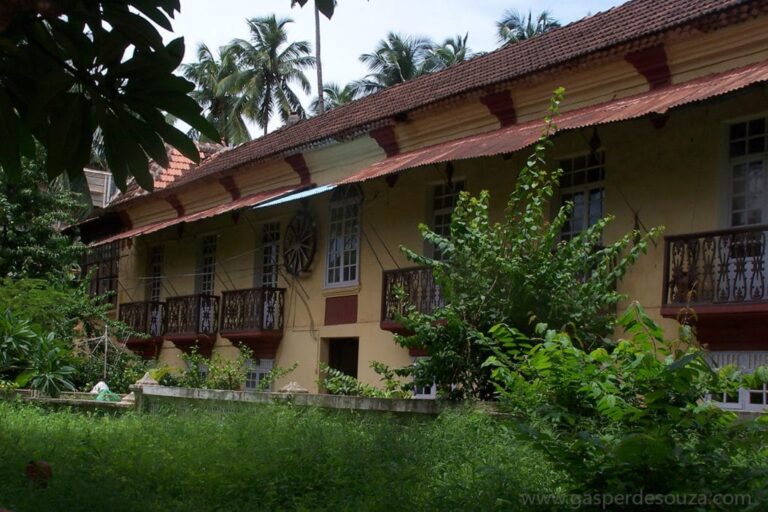A silky black ribbon on a fluttering bright summer dress, the road split the vast expanse of tall grass, waving gently in the breeze, extending to the horizon on both sides. The red hatchback zipped along. The morning cool had given way to warm air that now gushed through the open windows of the little car with five of us packed inside. On a hill ahead, the magnificent, imposing white facade of a church rose to the heavens. In the distance to the right, five, maybe six, church towers shimmered vaguely in the haze of the late morning sun. Those were the only visible signs of humanity in the serene landscape, as we made our way deeper into the island of Divar. We were on an island mission, but treasure was not what we were after.
The hatchback strained in first gear as it climbed to the top of a little incline, then rounded a bend to arrive at the village square. A couple of shops stood at one corner, a bus shelter on the opposite where a handful of villagers hung around.
“Let’s get out and explore on foot,” says the driver of the car, Prashant, a heavyset man, about 5 foot 8 with wavy silver hair that fell softly to one side of his face.
“This may be a good place to start,” he continued in his smooth metallic voice, the kind you’d like to hear. But not this time.
They were the words I was dreading I’d hear. You see, our little motley group were on a reconnaissance trip, scouting the island village of Divar for a possible art project and Prashant was the curator.
Karen, Alaknanda and Diptej completed the group. While Karen was a photojournalist, Nandita worked in documentary films. Diptesh, working in mixed media abstracts, seemed the only person with reason to be on an art project.
“Yes! Let’s walk down the road from this square” exclaimed Nandita, a definite sense of excitement in her voice.
“We could walk around and up to the church. It has stunning views,” said Karen. “It used to be the location of a Hindu temple before the Portuguese came,” she added.
And so, against my desires, I found myself stumbling out onto the village square.
The prospect of wandering around looking at structures that were people’s houses is not something I’m keen to do in the best of times. With the rising midday sun, this was farthest from what I would have liked to do.
But there was also another reason for my reluctance, much stronger than a midday sun in the middle of a desert. And I was going to have to face that soon.
*
When I received a call from Prashant, a few weeks before the Divar trip, about potentially participating in the second edition of the Serendipity Art Festival, one thought crossed my mind – do I even fit? The first edition of Serendipity was held on the banks of the river Mandovi in Goa last December. The festival’s idea is to bring together the visual, performing, and culinary arts from across India. A cultural experiment, it hopes to affect the way Indians interact with art in daily life.
Most noble. But truth be told I do not consider myself to be an artist. Isn’t that a prerequisite for participating in an Arts festival? I wondered.
Nevertheless, I sent Prashant my profile and work samples thinking to myself – this too shall pass. I was sure he would see right through my profile and conclude I did not fit in with the whole art theme at Serendipity.
Some weeks later, when he asked me if I could join him on a recce of Divar island, I was as surprised as I was reluctant to continue to be a part of this.
“It’s a charade for me to continue,” I thought. “I’m a documentary guy. Reality is my thing. What kind of phoney artist am I projecting here?”
I decided to excuse myself the day before the recce. I’d concoct a story, and that would be the end of that. But somehow, I didn’t.
“I’ll have a look,” I then promised myself. The first hint of being uncomfortable with the idea of an art project and I’ll respectfully back out. Little did I know what I was entering.
*
Prashant and the rest of the group have made their way ahead of me, down the narrow winding streets of Divar, armed with cameras and cell phones. I reluctantly follow with a little diary. Beads of sweat run down the back my spine. Big Portuguese-era houses line both sides of the road, giving the area a distinctive look. Painted in bright yellow, indigo or rust, the structures are vibrant in the bright noon sun.
I walk past some men painting the edges of the road with white reflective lines. Protection for the occasional motorist who would venture out at night.
“Uh! Not many of those,” I think, “so why waste the money?”
A lone bike passes. Then silence descends once again.
*
I turn another bend and face another street extending before me. As I continue to walk reluctantly, the stately homes begin to dissolve, slowly at first, then almost as if a spell is cast. I now look through the imposing facades. I can’t see a person around.
Then we pass one of the few old broken down houses in the area. Prashant is a few paces ahead of me, armed with his tiny camera.
“I see from your website, you’ve switched to mirrorless,” Prashant says to me as he snaps a photograph of the dark moss covered crumbling walls of what used to be someone’s stately home. Walls, now straining to peek from behind the undergrowth.
“Yes, it’s the Fuji system. Find it handy for my line of work,” I reply.
My line of work? Photographing structures did not appeal to me. It makes me feel like a thief or an outsider. Someone who certainly did not belong. I love people.
But by this point curiosity sets in. Curiosity about the people once living within the now run down walls, who once sat at the table for a family dinner. But even greater curiosity about the people who still live in the stately homes around us. The grandmother, full of stories, laying in her bed, waiting for what she calls release. Could I be more than just a passer-by? Could I become an invited guest? A guest for whom doors and hearts would open? What stories would I hear? As the walls of the old house behind the foliage, most of my feelings about art and art projects are beginning to disintegrate.
*
In 1998, in another bedroom in her council flat in Waterloo, Britain, 35-year-old Tracey Emin spent four days sleeping in bed. She had just been through a traumatic break-up and was experiencing a period of depression. She looked around her at the empty vodka bottles, knotted knickers, used condoms, pills and cigarette butts. From the depths of that despair, she was inspired to create. Her work titled My Bed featured all the paraphernalia loosely spread around her unmade bed. It was exhibited for the first time at Tate in 1999.
The Daily Mail said, about My Bed: For thousand years, art has been one of our great civilising forces. Today pickled sheep and soiled beds threaten to make barbarians of us all.
A little over 80 years before Emin, in 1917, Frenchman Marcel Duchamp walked down to the JL Mott Ironworks, a plumbing supply situated at 118 Fifth Avenue in New York. There he bought a plain white porcelain urinal from among the ready-mades on sale. Back at his studio, Duchamp signed it “R. Mutt” and thus was born the Fountain. He proceeded to submit his work to the exhibition of the Society of Independent Artists in New York. It was promptly rejected.
*
The village square is empty save for eight persons standing variously around. An old man sells newspapers from inside a bright yellow building. A wide window, with freshly polished wooden shutters, goes across the entire store front. The contrast of polished brown wood on bright yellow walls is stunning. Like the houses on the streets we walked by, those around the square wear a fresh look that says they’re certainly maintained. Village pride?
A sari-clad woman in her late 50s walks up to the newspaper shop.
“How much do I owe you for the month?” she asks. “I don’t keep track,” she adds chuckling.
“Let me check,” says the man from behind a table full of newspapers, election news screams out from headlines.
We’re two days away from results of what some believe to be a crucial election for Goa. You wouldn’t know that looking around the square. The man’s face is wrinkled but youthful. It could be the effect of a smile across his face or perhaps the island air does him good.
Running his fingers down a ledger on the table by the large window, he calls out “a hundred and seventy-two.”
The woman promptly rummages through her little purse, hands him some notes, thanks him and walks away.
Around the corner of the same building, an old lady, about 4 feet high, bent with age, struggles at the counter of the tiny store. Several packs of biscuits and chips are strewn on the counter top before her. While simultaneously trying to hold on to her little purse, she’s shoving the packets into her plastic bag, clearly struggling.
A man has just got off a scooter and heads to the store. He reaches out and grabs hold of the bag for the lady, saying not a word. She looks up at him. “See what I’m buying!” she says.
“Why do I want to see what you’re buying?” he replies, “I’m just helping you.”
“It’s for the children. This is the children’s food,” she continues, not bothering with his response. “It’s what they eat. The kids.”
I picture the old woman back at her home, reaching into the cupboard one late afternoon and helping herself to some good sweet biscuits. Just what the doctor did not order.
“Doctor be damned,” she says, “What does he know anyway?”
I smile as I return to the scene at the store. The old woman’s managed to pack her bag and now turns away muttering, “There’s no bus today.”
“It will be here,” says the man from the scooter.
“No. See, it’s been a while already. There’s no bus today,” she insists.
The man turns to make his purchases. I walk on by wondering if he will offer her a ride home on his white Vespa.
Questions are raging in my head by this point.
*
To be human is to create art. But what constitutes art is a debate that will live for as long as humans continue to roam this planet or any other planet they colonise. Can reality be art?
I walk past the bus shelter at the far side of the square. An old man with a baseball cap sits one leg across the other at the knee, arms folded. It’s a bus shelter. He looks at me, then looks away. I don’t think he’s waiting to go anywhere.
“Art is sometimes like that,” I think to myself as I walk by.
*
35,400 years ago, an ancestor of mine, grabbed red ochre and drew a wild pig on the walls of his cave in the central Indonesian island of Leang Pettakere. That pig is the earliest such form-based painting. In the same cave excavators also found hand stencils in white and red ochre, dating back 40,000 years.
Our ancestors drew what they saw around them – their food (animals they hunted), their enemies (animals that hunted them) and plant life. They documented their surroundings using the tools they had.
Today this documentation is considered the earliest works of art. So, what is art? And who decides what isn’t art?
*
Back in the hatchback we now arrive at a ferry crossing on the other side of the island. The blue flat open front boat has just gone across to the other side. Prashant parks the car by the side of the narrow road. It barely fits two cars. Little single-storied structures line both sides leading to the jetty. Not imposing like the houses we had passed. These are simple structures. The water glistens ahead in the sun-drenched river. A crow flies over and darts into the tree just behind the store with a dusty Coca-Cola sign above.
“Anyone for a coke?” asks Prashant.
No one is interested. Diptesh and Nandita share a cigarette between them.
Two men stand at the entrance to the store. Behind them, the glass display is loaded with biscuits, chips and chocolates. Looking closer I see some plastic lunch boxes and water bottles – the kind kids take to school.
A middle-aged dark-skinned man sits in the shade of a closed doorway on the opposite side of the road. He is wearing a white T-shirt and sports a baseball cap with an oil rig symbol emblazoned on it. Probably retired from a job in the Gulf.
“Where are you from?” he asks looking up at us.
“We’re from Goa,” says replies Diptesh, in Konkani.
“You are all Goans?” the man inquires, “Not living here I think,” he continues, looking past Diptesh at the rest of us.
“We do, live in Goa,” this time Karen offers, also in Konkani.
He seems satisfied now and smiles. I smile back.
There’s just one other vehicle waiting to board the ferry. We’re far from the usual tourist circuit for sure. You have to be lost if you are a tourist out here. Or perhaps out to buy property on the island. The ultimate fantasy of city dwellers it seems. And property is one thing the Islanders of Divar guard zealously. Even a bridge to the mainland is not favoured to protect their identity. That explains the lack of high rise buildings or resorts on the island.
I sit on a stone by the side of the road under the shade of a peepal tree. Behind me, on an altar are two little pairs of carved stone feet. A lamp burns on a level below the feet. It’s the protector of the area. The devchar. He will take us across safely.
“Who’s winning this time?” the old man breaks the silence.
“Madkaikar” the two men at the store reply in unison.
“Yes, Madkaikar! That’s for sure,” says the old man. “He’s getting at least twelve.”
“Twelve! No, I don’t think so,” shoots back the other. “Perhaps one or two,” he adds.
Politics and people from out of state. Hot topics in these parts it seems.
Our ferry docks and we board. Prashant manoeuvres the hatchback up the ramp bringing it to a halt at the back of the boat. Soon we’re off. I watch the mangroves along the shoreline fall back along with the island of Divar and its unique people in their self-imposed isolation. The boat leaves little waves in its wake.
*
Borne out of isolation, My Bed sold in 2014 for 2.2 million pounds at Christie’s and is now back on a 10-year loan to Tate, sixteen years after it was first exhibited there. Today, art historians regard the Fountain as a major landmark of the 20th-century art world.
Philosopher Stephen Hicks argued that Duchamp, knowing fully well conventional ideas about art, in selecting the urinal had one message to send: Art is something you piss on.
I think I have my project idea.
***



